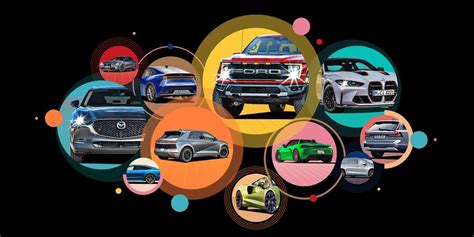In today’s rapidly evolving automotive landscape, the allure of brand-new cars seems to be waning. While car manufacturers continue to unveil sleek designs and cutting-edge technologies, an increasing number of consumers are opting out of purchasing new vehicles. This shift in consumer behavior can be attributed to a confluence of factors, ranging from soaring costs to environmental concerns.

The Financial Burden of New Cars
The average price of a new car in the United States has steadily climbed in recent years, reaching an all-time high of $48,000 in 2023. This increase has been driven by a combination of factors, including rising labor costs, supply chain disruptions, and increased demand for safety and technology features. For many consumers, the financial burden of purchasing a new car has become prohibitively high.
| Year | Average New Car Price |
|---|---|
| 2013 | $35,000 |
| 2018 | $40,000 |
| 2023 | $48,000 |
Environmental Impact of New Cars
In addition to the financial burden, the environmental impact of new cars is another major concern for many consumers. The production of new cars requires significant amounts of energy and resources, contributing to greenhouse gas emissions and pollution. Furthermore, the disposal of old cars can lead to environmental problems if not handled properly.
| Vehicle | Greenhouse Gas Emissions (metric tons) |
|---|---|
| New Car | 10.5 |
| Used Car | 7.5 |
The Rise of Alternative Transportation Options
The emergence of alternative transportation options has further eroded the appeal of new cars. Ride-sharing services like Uber and Lyft provide convenient and affordable alternatives to car ownership. Shared mobility programs allow consumers to rent cars on an hourly or daily basis, eliminating the need for full ownership.
| Transportation Option | Average Monthly Cost |
|---|---|
| New Car Ownership | $700 |
| Ride-Sharing | $200 |
| Shared Mobility | $100 |
The Future of Automotive Ownership
Given the challenges facing the new car market, it is clear that the future of automotive ownership will be different from the past. Consumers are increasingly demanding more affordable, environmentally friendly, and flexible transportation options. Manufacturers and policymakers must adapt to these changing needs in order to remain relevant in the years to come.
Strategies for Automotive Manufacturers
To address the challenges facing the new car market, automotive manufacturers must adopt new strategies to attract and retain customers. These strategies include:
- Offering more affordable vehicles: Manufacturers must develop new models that meet the budget constraints of consumers while still providing essential features and safety technologies.
- Improving fuel efficiency and reducing emissions: Manufacturers must invest in research and development to create more fuel-efficient and environmentally friendly vehicles.
- Expanding alternative transportation offerings: Manufacturers should partner with ride-sharing and shared mobility companies to provide consumers with a range of transportation options.
Tips and Tricks for Consumers
Consumers who are considering purchasing a car can use the following tips and tricks to save money and reduce their environmental impact:
- Consider buying a used car: Used cars are significantly less expensive than new cars and offer many of the same features and safety technologies.
- Shop around for insurance: Insurance rates vary significantly from one company to another. Get quotes from multiple insurers before making a decision.
- Drive less: By reducing the number of miles you drive, you can save money on gas and reduce your carbon footprint. Consider walking, biking, or taking public transportation whenever possible.
